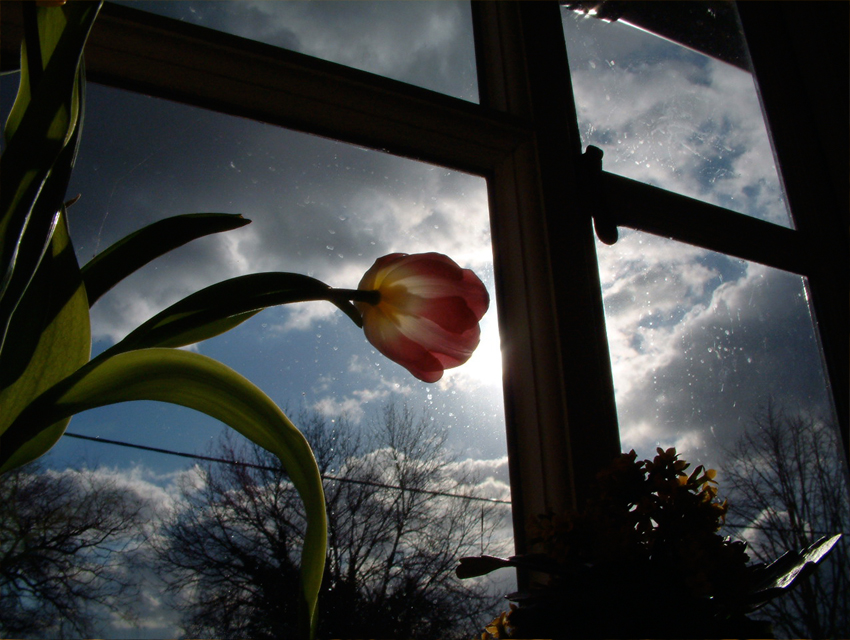
Tulip
Isola Bella, a small island on Lago Maggiore, Italy, was once a fishing village before being taken over by count Carlo III Borromeo (c.17th) who built an elaborate palazzo and gardens dedicated to it’s name sake, his wife Isabella D’Adda.
Folklore has it that the ladies of the Borromeo household asked the Count to build a residence on the island so they wouldn’t have to listen to the blood curdling cries of prisoners in the dungeons of his castle on the mainland.
On a second visit to Isola Bella, I was less drawn to the ostentatious Baroque gardens, the richly decorated rooms and grottoes and preferred to wander the shaded, winding and narrow back streets where less celebrated contemporary artefacts caught my eye.
I am unashamedly a tree hugger. The life of trees never ceases to inspire me – the contortions they perform to reach light, their ingenious conversion of light into energy and the sense of season symbolized through their changing appearance. I find their presence comforting and peaceful, offering shelter, both physically and metaphorically.
The pictures above have been taken in the wide-skied fenlands of Suffolk, on the hills of Gloucestershire, the wind-sculpted coastlines of Cornwall, and under the surreal light (from an english perspective) of New South Wales.
I’ve had a look on the internet and come up with the following tree related links:
1. A series of tree paintings by Michelle Dovey – inspired by memory and responding to the landscape traditions of earlier generations – painters such as George Stubbs, JMW Turner and Antoine Watteau.
Works by Michelle Dovey at Gimpel Fils
Info on these paintings at www.hustlerofculture.com
http://www.hustlerofculture.com/me_we/2009/05/london-new-landscapes-052809-070409.html
2. Tree close ups by Constable.
Study of the Trunk of an Elm Tree, c.1821
Van Gogh, Cypresses, Saint-Rémy, 1889
Having recently seen this at the ‘The artist and his letters’ exhibition at the Royal Academy, I was enormously impressed by it – the impact of scale and use of impasto just can’t be grasped from reproductions.
5. Tree paintings by Emily Carr
Scorned as Timber, Beloved of the Sky, 1935
If you have any interesting links relating to trees and trees in art that you would like to share, please send them along, it would be good to hear from you.
Have a look at this amazing list of colours at Wikipedia, and the tantalizing names that have been found to describe them – both traditional and modern – where Antique Fuschia, Carnation Pink and British Racing Green are found alongside Jazzberry Jam, Tickle Me Pink and Cosmic Latte.
The near impossible task of matching colour from monitor to monitor and the absence of surface and pigment means it’s inevitably a hit and miss affair – so Banana Yellow looks nearly identical to (American) School Bus Yellow on my screen.
Things get more whimsical at www.colourlovers.com where site users have contributed to the naming of a bewildering eight million colours, and submitted custom schemes and patterns.
“ ‘Originality’ is the unsought and unnoticed product of a gifted artist’s successful attempt to be honest and truthful and to penetrate to the origins, the roots of what he sees. The deliberate search for a personal style inevitably interferes with the validity of the work, because it introduces an element of arbitrariness into a process that can be governed only by necessity.”
Rudolf Arnheim
”Fruits … like having their portrait painted. They seem to sit there and ask your forgiveness for fading. Their thought is given off with their perfumes. They come with all their scents, they speak of the fields they have left, the rain which has nourished them, the day breaks they have seen.”
Paul Cezanne
LeShan, Lawrence. How to meditate. London: Back Bay Books, 1999, p.39.